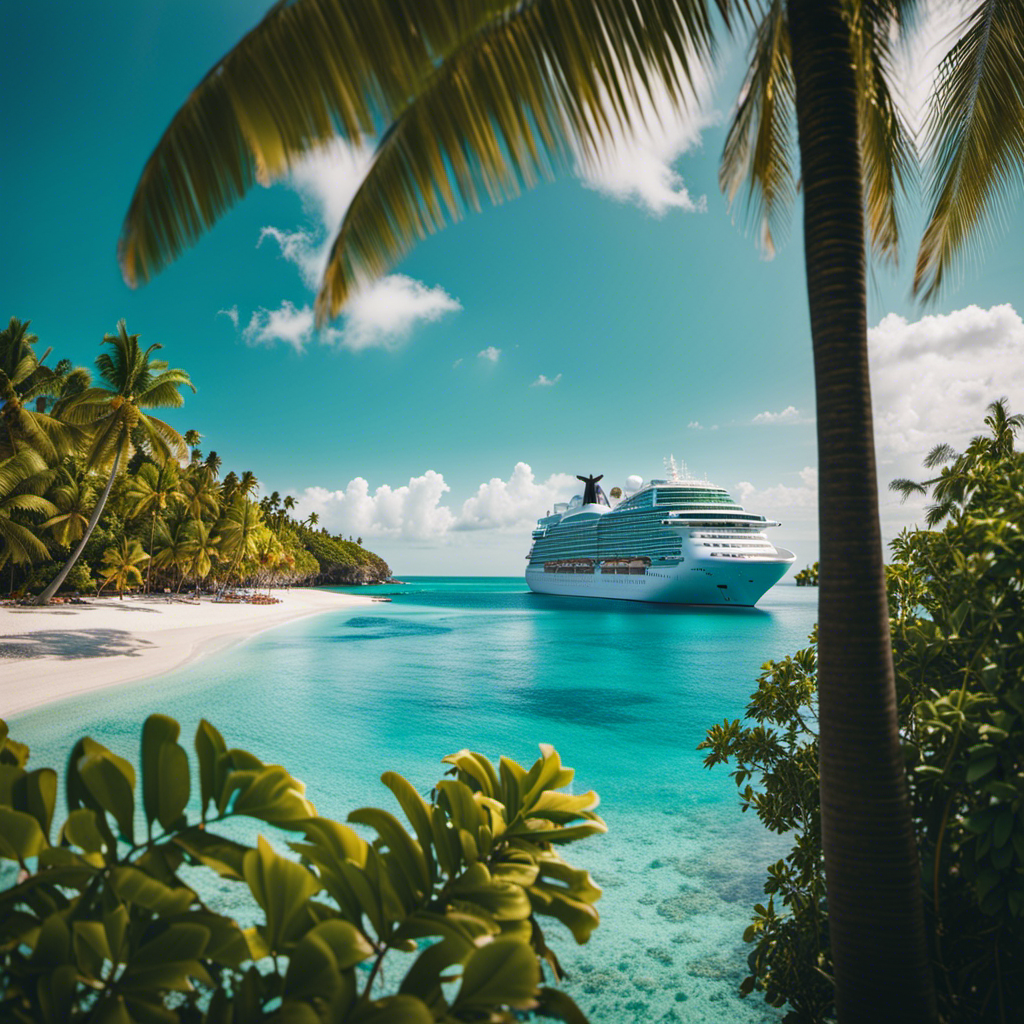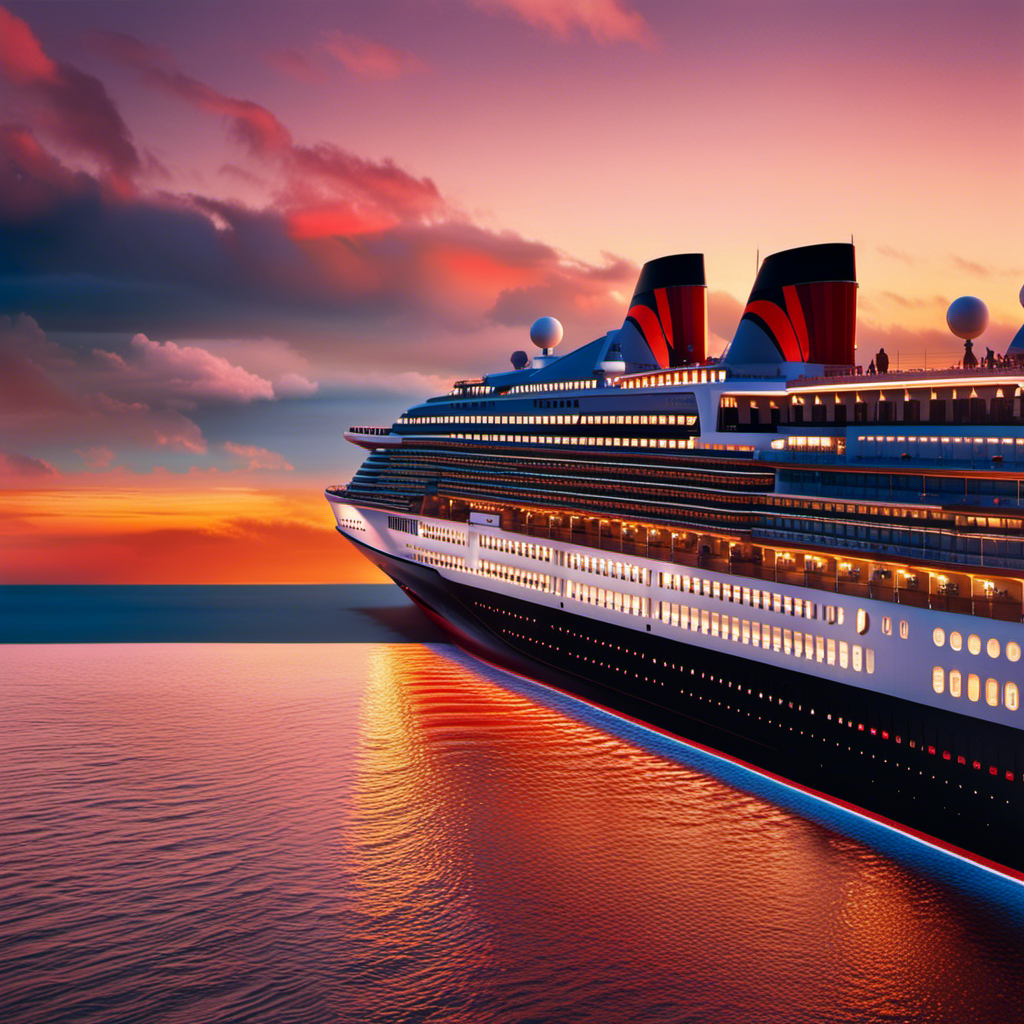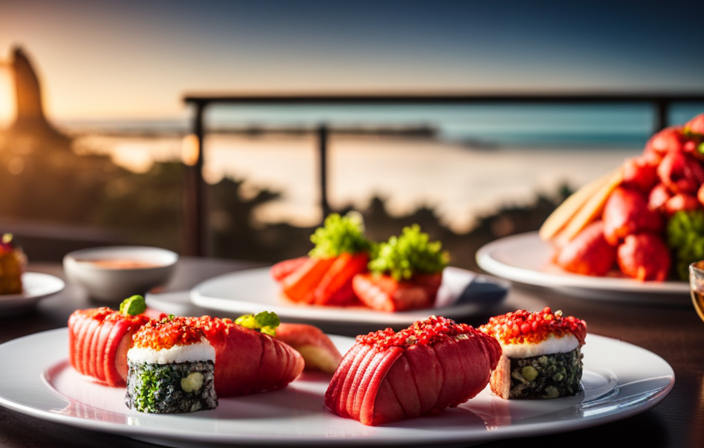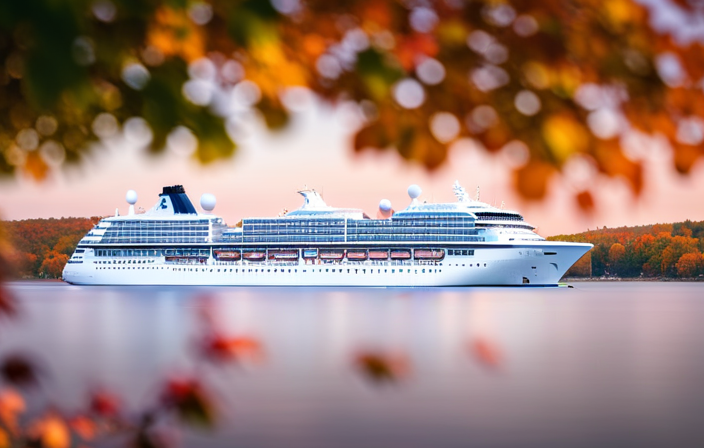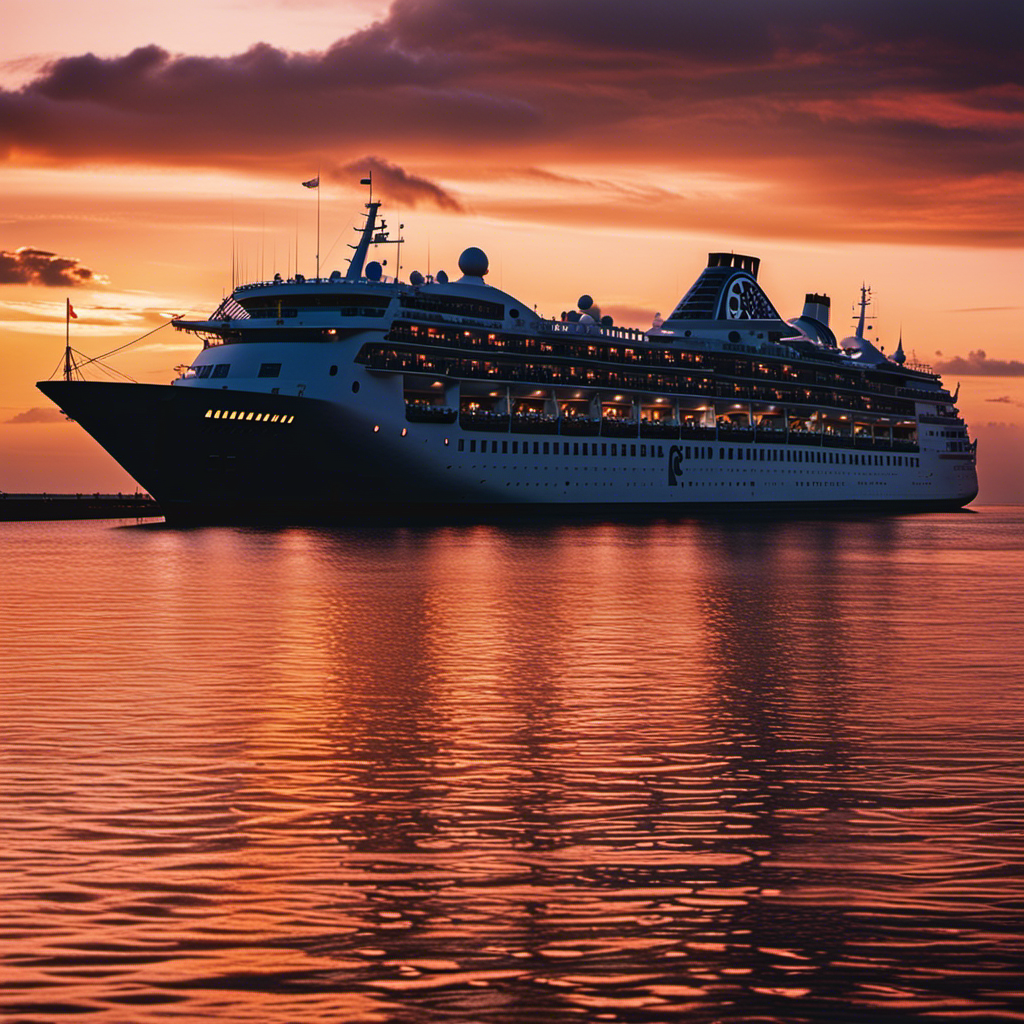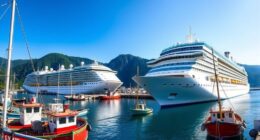I’ve always been captivated by the thought of taking a cruise, but the potential expenses can appear intimidating. What elements contribute to the total cost of a cruise?
And what can I expect in terms of expenses once I’m on board? In this article, we’ll explore the various factors that can impact cruise costs, from the type of cabin chosen to the selection of the ship and cruise line.
So, if you’re curious about what to expect when it comes to cruise costs, keep reading to find out more.
Key Takeaways
- The cost of a cruise is influenced by factors such as the type of cabin chosen, the length of the cruise, the timing of sailing, and the selection of ship and cruise line.
- The cruise fare includes the cost of the cabin, meals, entertainment, and access to ship amenities, but excludes additional expenses like alcoholic drinks and specialty restaurants.
- Onboard spending, which includes expenses beyond the cruise fare, can vary greatly among individuals and typically ranges from 30-40% of the cruise fare.
- Gratuities are automatically charged to the account and paid by all passengers, with rates around $15 per person, per day. Additional expenses such as transportation to and from the port and port spending should also be considered.
Type of Cabin Chosen
When choosing a cabin, I need to consider the type that best fits my preferences and budget. There are various cabin options available on a cruise ship, ranging from interior cabins to luxurious suites.
Interior cabins are usually the most affordable, as they have no windows and are located on the lower decks. Oceanview cabins have windows or portholes, allowing for natural light and views of the ocean. Balcony cabins offer a private outdoor space, perfect for enjoying the sea breeze. And finally, there are the extravagant suites with spacious living areas and exclusive amenities.
When choosing the right cabin, I must weigh my desire for comfort and privacy against the cost. It’s important to consider what features and amenities are important to me in order to make the best decision.
Length of Cruise
During a longer cruise, I can enjoy more time onboard and explore multiple destinations. However, when it comes to cost comparison, shorter cruises have their own set of benefits.
Here are a few reasons why shorter cruises can be a cost-effective option:
-
Lower Cruise Fare: Shorter cruises usually have a lower base fare compared to longer ones. This can make them more affordable for budget-conscious travelers.
-
Reduced Onboard Spending: With a shorter cruise, there is less time for onboard spending on things like specialty restaurants, gambling, and souvenirs. This can help keep the overall expenses in check.
-
Lower Gratuities: Since gratuities are charged per day, shorter cruises have lower gratuity costs. This means you can save some money on tipping.
Timing of Sailing
I prefer to book my cruise during the off-peak season to take advantage of lower fares and fewer crowds. Timing of sailing plays a significant role in determining the cost of a cruise. Discounts for off-peak sailings are common, as cruise lines aim to fill their ships during less popular times. Seasonal price fluctuations also affect the cost, with peak season cruises being more expensive. To illustrate this, consider the following table:
| Season | Price |
|---|---|
| Off-Peak | Lower |
| Peak | Higher |
| Summer | Higher |
| Holidays | Highest |
| Shoulder | Moderate |
As you can see, off-peak and shoulder seasons offer the best opportunities for discounted fares. By booking during these times, you can save money and avoid overcrowding on the ship. Keep in mind that while prices may be lower, weather conditions and available activities may vary during off-peak seasons. Overall, timing your cruise wisely can lead to significant savings and a more enjoyable experience.
Ship and Cruise Line Selection
Choosing the right ship and cruise line is crucial to ensuring a satisfying and enjoyable cruise experience. When selecting a cruise ship, there are several factors to consider.
Firstly, you should compare different cruise lines and their costs. Some cruise lines offer budget-friendly options, while others cater to luxury travelers. It’s important to assess your budget and preferences before making a decision.
Secondly, you should consider the amenities and activities offered by each ship. Some cruise ships have a wide range of entertainment options, while others focus more on relaxation and wellness.
Finally, take into account the size and layout of the ship. Larger ships tend to have more onboard facilities, but smaller ships can offer a more intimate experience.
Budget Vs Luxury Cruise Options
When comparing budget and luxury cruise options, it is important to consider the amenities and services offered by each.
Here are four factors to consider when comparing the cost of budget and luxury cruises:
-
Accommodations: Budget cruises typically offer smaller, more basic cabins, while luxury cruises provide spacious and luxurious accommodations with amenities like private balconies and butler service.
-
Dining Options: Budget cruises usually have a limited number of dining venues, while luxury cruises offer a variety of gourmet restaurants and specialty dining options.
-
Entertainment and Activities: Luxury cruises often feature Broadway-style shows, live music performances, and a wide range of onboard activities. Budget cruises may have fewer entertainment options.
-
Service: Luxury cruises pride themselves on providing exceptional service, with highly trained staff attending to passengers’ needs. Budget cruises may have fewer staff members, resulting in less personalized service.
Considering these factors will help you make an informed decision when choosing between budget and luxury cruise options.
Components of Cruise Fare
The components of the cruise fare include the cabin, meals, entertainment, and access to ship amenities. These inclusions form the foundation of the cruise experience, providing passengers with a comfortable place to stay, delicious meals, and a wide range of entertainment options.
However, it is important to note that there can be variations in cruise fare based on factors such as cabin type and cruise line. For instance, upgrading to a suite or choosing a luxury cruise line may result in a higher fare. On the other hand, budget cruises offer more affordable options.
It’s essential to consider these variations when planning a cruise to ensure that the fare aligns with your preferences and budget.
Excludes Additional Expenses
Now that we have discussed the components of a cruise fare, let’s delve into the additional expenses that are not included in the initial cost.
These expenses typically include alcoholic drinks and specialty restaurant costs. It’s important to note that while the cruise fare covers meals, it usually does not include alcoholic beverages. The pricing for alcoholic drinks aboard a cruise can vary depending on the cruise line and the type of drink.
Specialty restaurants, which often offer a higher level of dining experience, also come at an additional cost. These restaurants usually have a cover charge or require reservations. The cost can vary depending on the restaurant and the menu options available.
It’s essential to budget for these additional expenses to avoid any surprises when onboard.
Price of Cruise Fare Varies
I’ve noticed that the price of a cruise fare can vary depending on factors such as the type of cabin and the cruise line selected. Let’s take a closer look at the different types of cabin options and how they can affect the overall cost of your cruise.
| Cabin Type | Description | Price Range |
|---|---|---|
| Interior | No window, located on lower decks | $500 – $1,000 |
| Oceanview | Window or porthole, offers a view of the ocean | $1,000 – $2,000 |
| Balcony | Private balcony, provides outdoor space | $2,000 – $3,000 |
As you can see, the price range for different cabin types can vary significantly. Interior cabins are generally the most affordable option, while balcony cabins tend to be more expensive. It’s important to consider your preferences and budget when choosing a cabin, as it can greatly impact the overall cost of your cruise. Additionally, the cruise line you select can also affect the price of the fare. Some cruise lines are known for their luxury offerings and may have higher fares compared to budget-friendly options. By considering these factors, you can make an informed decision and find the right cruise fare for your needs.
Onboard Spending
When it comes to onboard spending, I can choose to spend as little or as much as I want on things like gambling, alcohol, specialty restaurants, and souvenirs.
Onboard spending refers to expenses beyond the cruise fare, and it varies among individuals. Some frugal travelers may spend very little, while others may splurge and spend hundreds.
One popular onboard spending option is gambling, with cruise ships offering casinos with a variety of games. Another option is specialty restaurants, which provide a unique dining experience for an additional cost. These restaurants often offer gourmet cuisine and a more intimate atmosphere.
It’s important to keep in mind that the amount spent on onboard spending typically ranges from 30-40% of the cruise fare. So, it’s wise to budget accordingly and prioritize the activities and experiences that matter most to you.
Gratuities and Additional Expenses
Port parking costs around $20 per day, while discounted rates may be available for convenient transportation to and from the port. When budgeting for a cruise, it’s important to consider additional expenses such as prepaid gratuities and transportation costs.
Here are some key points to keep in mind:
-
Prepaid gratuities: Gratuities are automatically charged to the account and paid by all passengers. Rates are around $15 per person, per day. These charges are shared among staff, with a significant portion going to cabin stewards and waitstaff. Prepaying gratuities can help you avoid unexpected expenses during your cruise.
-
Port parking costs: Parking at the port can add to your budget. On average, it costs around $20 per day. However, discounted rates may be available if you book in advance or choose alternative transportation options.
Considering these expenses, it’s important to factor them into your overall cruise budget to ensure a smooth and stress-free experience.
Frequently Asked Questions
Are There Any Discounts or Promotions Available for Booking a Cruise?
Yes, there are often discounts and promotions available for booking a cruise. These can include reduced fares, onboard credit, or free upgrades. It’s worth researching and comparing options to find the best deal.
What Are Some Common Hidden Fees or Charges That May Not Be Included in the Initial Cruise Fare?
Common hidden fees on cruises include gratuities, onboard spending, and additional expenses like transportation and port parking. These charges can significantly increase the total cost of a cruise and should be considered when budgeting for a trip.
How Can I Save Money on Onboard Spending During My Cruise?
To save money on onboard spending during my cruise, I can limit my indulgences like gambling and alcohol, opt for included meals instead of specialty restaurants, and avoid unnecessary purchases like souvenirs.
Are There Any Options for Upgrading or Changing Cabins Once Onboard the Ship?
Yes, there are options for upgrading or changing cabins once onboard the ship. The availability and cost of these options may vary depending on the cruise line and the specific ship.
What Are Some Tips for Budgeting and Managing Expenses While on a Cruise?
When it comes to budgeting and managing expenses on a cruise, there are a few tips I’ve learned. Cut down on expenses by tracking and managing your cruise expenses effectively.
Alfons is the visionary leader and driving force behind Voyager Info’s success. As the Editor in Chief, he brings a wealth of experience and an unwavering passion for travel to the helm of our cruise-centric platform.
With a lifelong fascination for exploring new horizons, Alfons discovered his love for the ocean and cruising at a young age. From sailing across pristine Caribbean waters to embarking on daring expeditions to far-flung destinations, he has amassed a treasure trove of first-hand experiences in the world of cruising.

